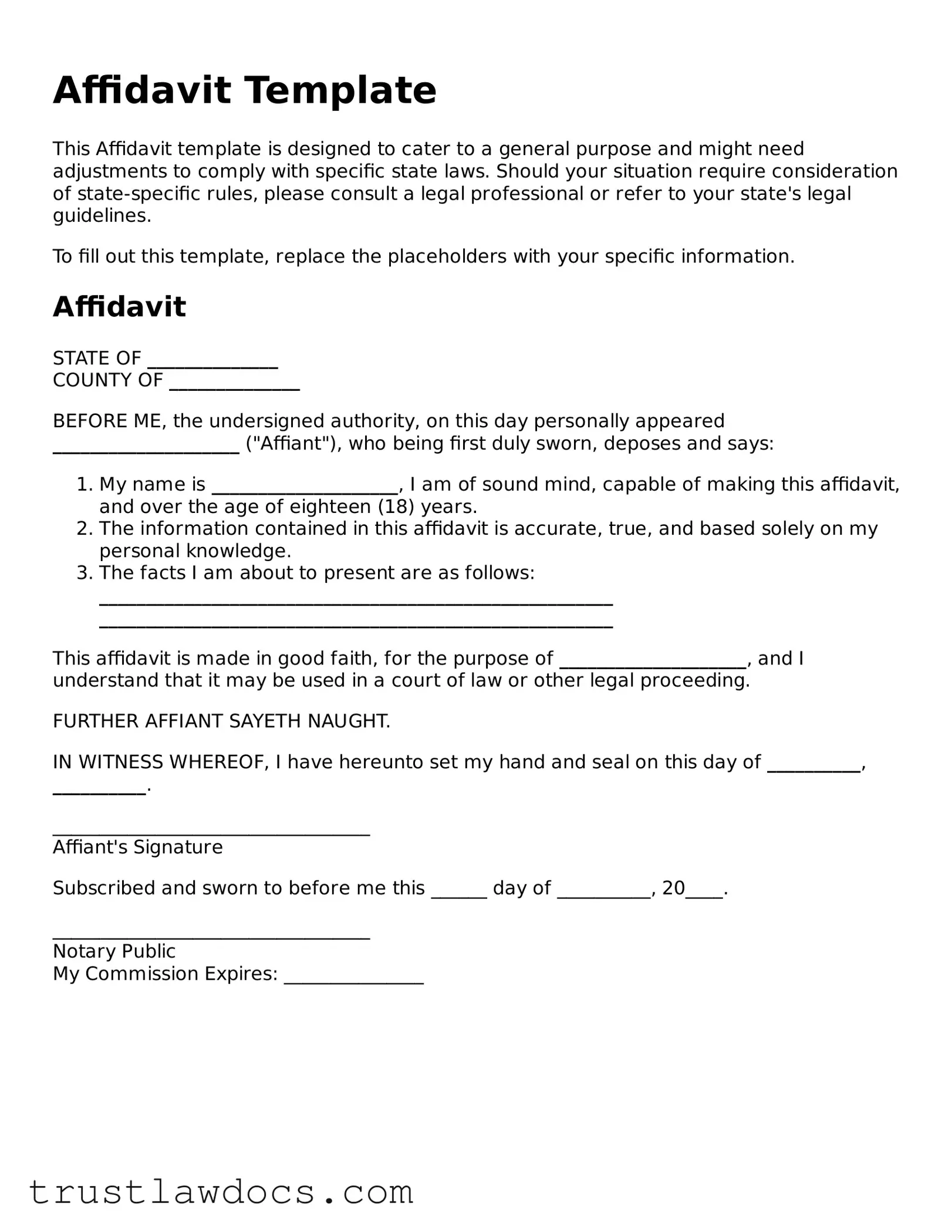An Affidavit form shares similarities with a Statutory Declaration. Both are written statements, sworn to be true, which individuals must sign in front of a legal official, such as a notary public. However, while affidavits are used in court cases or other legal matters, statutory declarations are often required for government procedures or to satisfy regulatory requirements, indicating the purpose and specific use of each document differ.
Similar to an Affidavit, a Deposition also involves the provision of sworn, out-of-court testimony. A deposition is used during the discovery process of litigation and is recorded by a court reporter. The main difference lies in the setting; depositions are typically conducted in a lawyer's office, with both parties’ legal representation present, contrasting the often simpler process of signing an affidavit.
A Sworn Statement is quite like an Affidavit, in that it is a document containing facts that are declared to be true under penalty of perjury. However, sworn statements may not always require a notarial seal to be considered valid. They are used in various contexts but do not carry the same weight in court as an affidavit, which is legally bound by the oath sworn before a notary or officer.
The Power of Attorney (POA) document, while serving a different primary function—granting someone else the authority to make decisions on one’s behalf—shares the requirement of formal acknowledgment by a notary or legal official, akin to an affidavit. This acknowledgment ensures the document's legitimacy, mirroring the process of verifying an individual's identity and understanding of an affidavit before it's signed.
Not unlike an Affidavit, a Last Will and Testament is a document that must be signed in the presence of witnesses to attest to its authenticity. Both documents are integral in legal proceedings, with a last will outlining the wishes of a person after death, and an affidavit serving as a sworn statement of fact within the individual's lifetime.
Letters of Administration are court issued documents similar to affidavits in the context of estate matters. When someone dies intestate (without a will), these letters grant authority to an administrator to manage and distribute the deceased's estate, under oath of faithfully administering the estate, akin to the sworn truth in affidavits.
A Contract Agreement, while primarily a mutual agreement between parties rather than a sworn statement, often requires acknowledgment by a notary or witness to affirm the identity of the signatories, similar to an affidavit. This formal witnessing ensures that the agreement was indeed entered into willingly by the parties involved.
Living Wills, much like affidavits, are legally binding documents expressing an individual's wishes, in this case regarding medical treatment and end-of-life care. Both require the individual to state their wishes clearly and, often, to have their signatures witnessed to ensure the legitimacy and understanding of the document’s contents.
Finally, a Quitclaim Deed, used to transfer property from one party to another without warranties on the title's clarity, necessitates notarization similar to an affidavit. This shared requirement ensures that the document is officially recognized and that the signing party understands the deed's implications, highlighting the formal similarities in their execution.
